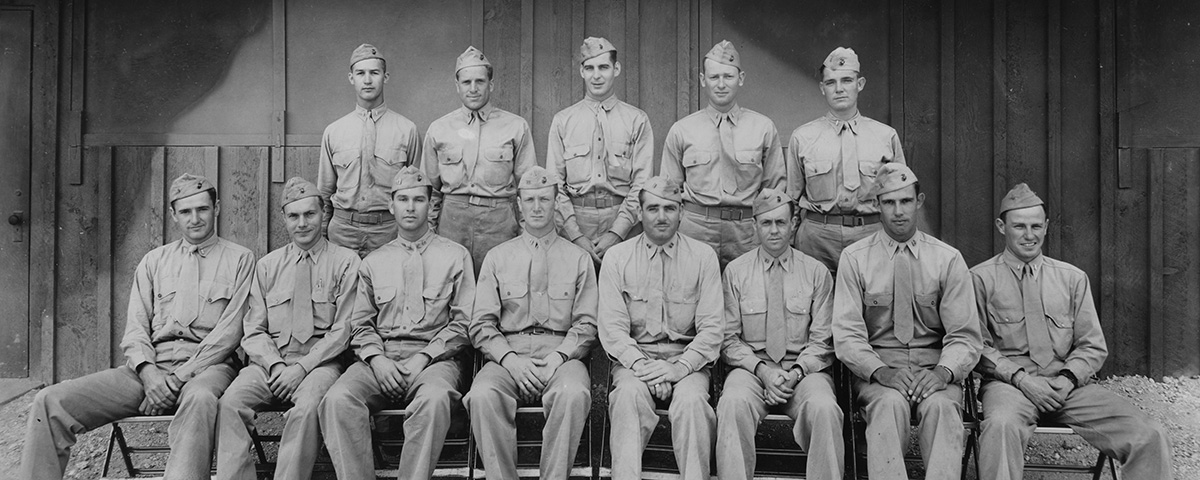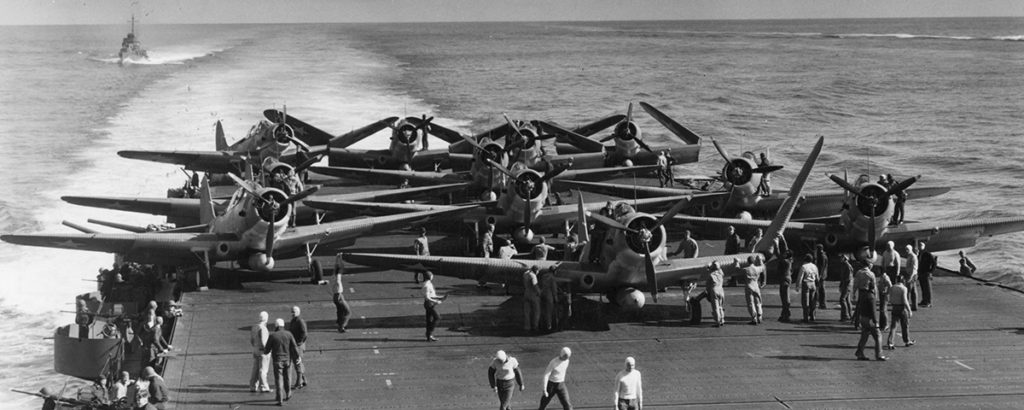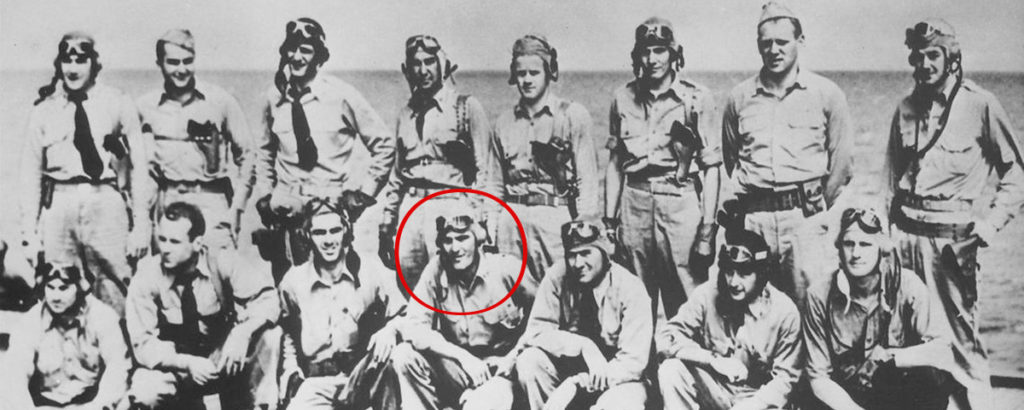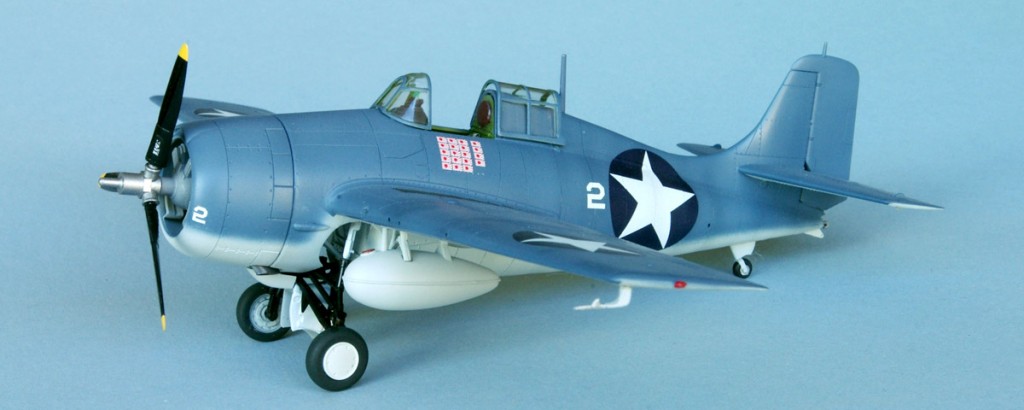At 0555 hours on June 4, 1942, the heart-pounding wail of Midway atoll’s air raid siren sent the pilots of Marine Fighting Squadron 221 (VMF-221) scrambling to their aircraft. The island’s air defense radar had detected a swarm of Japanese aircraft—“Many planes, 93 miles, 310 degrees, altitude 11,000 feet”—heading their way, and no pilot wanted to be caught on the ground when they arrived.
Second Lieutenant John C. Musselman Jr., the squadron duty officer, jumped in the command post pickup truck and raced along the line of aircraft revetments, gesturing wildly. “Get airborne!” he yelled excitedly. Within minutes, the taxiway was crowded with Brewster F2A-3 Buffalo and Grumman F4F-3 Wildcat fighters urgently scrambling to get into the air.
Major Floyd B. “Red” Parks, the squadron commander, took off first with his five-plane division of Buffalos. He was followed closely by three other F2A-3 divisions (one with a Wildcat attached) and a three-plane division of F4F-3s led by Captain John F. Carey (two additional Wildcats, already flying a patrol, joined Carey’s division after refueling). The five divisions were divided into two equal groups, one vectored out on an azimuth of 310 degrees and the other on 320 degrees. Altogether, VMF-221 put 26 fighters into the air, although one had to turn back. Second Lieutenant Charles S. Hughes’ engine was vibrating badly and losing power. “The engine was [running] so rough it would have been suicide to try and fight the plane,” he reported.
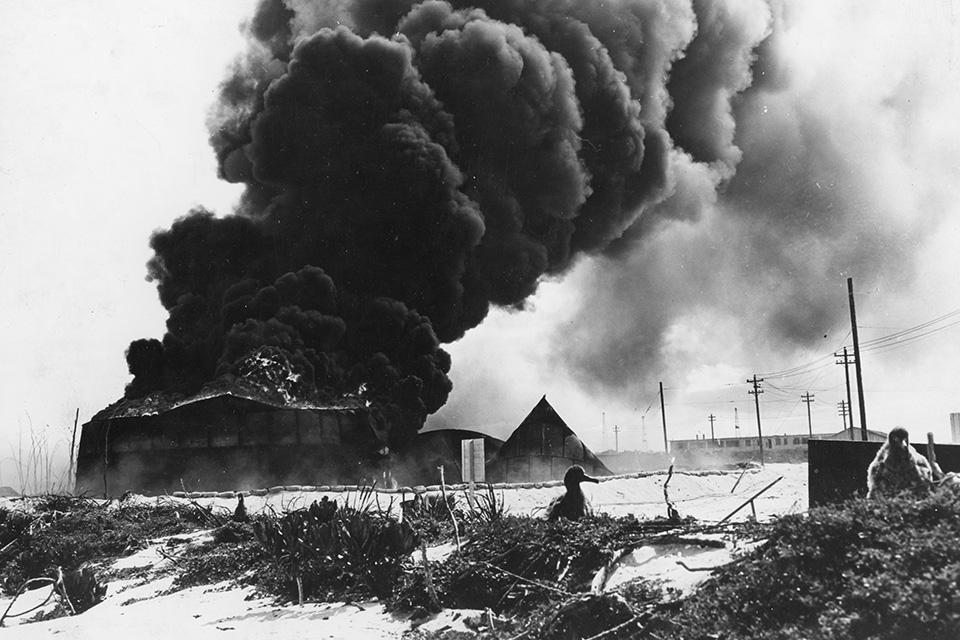
Captain Carey’s fifth division was the first to make contact. As Carey peered intently through his Wildcat’s windshield, scattered cumulous clouds cut visibility, making it difficult to see the reported “many bogies heading Midway.” He was at 14,000 feet, with 2nd Lt. Clayton M. Canfield echeloned right and slightly to the rear, and Captain Marion E. Carl several hundred yards behind. Canfield slid behind his leader as Carey “made a wide 270 degree turn, then a 90 degree diving turn.” Canfield’s radio suddenly came alive with the electrifying “Tally-ho! Hawks at angels 12,” and, after a slight pause, “accompanied by fighters.”
Arrayed in five “V” formations 2,000 feet below, 36 Nakajima B5N2 “Kate” level bombers and 36 Aichi D3A1 “Val” dive bombers roared toward the island. An escort of 36 Mitsubishi A6M2 Zeros flew out of position just below and behind them, expecting to catch the Americans climbing to attack. The Marines’ altitude advantage gave them a free pass at the exposed Japanese bombers.
Carey started his run “high side from the right” on the leader of the first V. He waited until the enemy plane filled his gunsight and then opened up with his four .50-caliber machine guns, shredding the Kate and setting it on fire, but not before its gunner cracked Carey’s windshield with a slug. Milliseconds later, the bomber blew up, filling the air with debris. Carey streaked down through the bomber formation, then zoomed up and turned back for another attack. He started to make a high wingover run when his F4F was raked by a burst of fire that tore through his right knee and left leg. In excruciating pain and on the verge of losing consciousness, Carey “dove at about a 40-degree angle and headed for a large cloud about five miles away.”
Canfield followed Carey through the enemy formation and “fired at the number three plane in the number three section until it exploded and went down in flames,” he reported. In the middle of the run, the Zero escort dived on the three Americans, cannons and machine guns blazing. Canfield said his Wildcat was “hit on the right elevator, left wing and flap and just ahead of the tail wheel by a 20mm cannon shell. There was also a .30-caliber hole through the tail wheel and one that entered the hood on the right side about six inches up, passing just over the left rudder pedal and damaging the landing gear.”
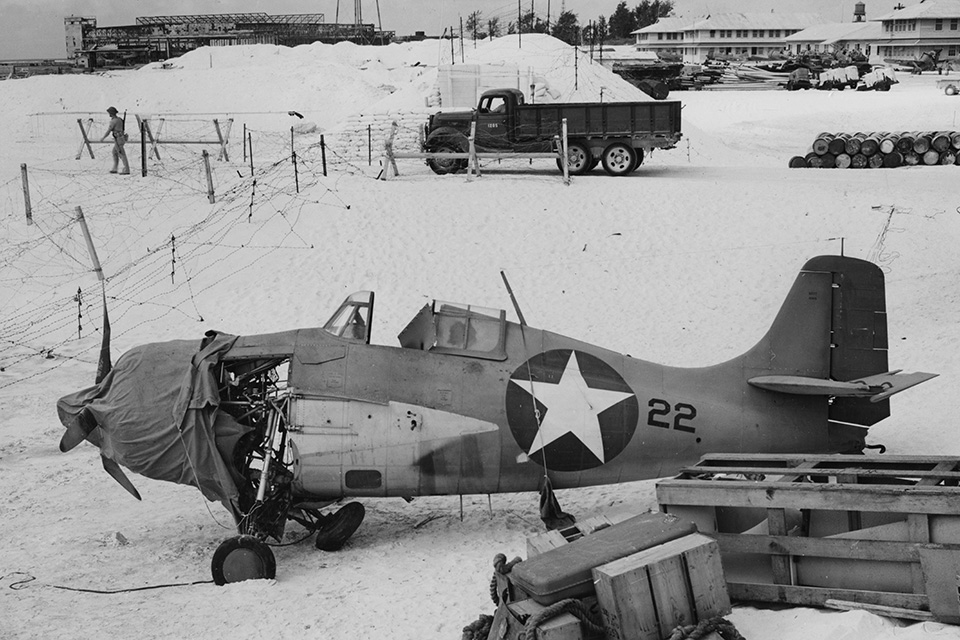
Canfield wisely decided to follow Carey to safety. “I went around the cloud in the opposite direction and joined up with him again,” he said. The two airmen headed in the general direction of Midway on an unsteady course. Carey kept losing altitude and falling behind. “I kept throttling back so he could keep up,” Canfield explained. “Carey’s wounds kept him from working the rudders, and his plane was all over the sky.”
The two pilots reached the field, which was under attack, and prepared to land. Canfield discovered that he did not have any flaps. “When the wheels touched the ground the landing gear collapsed and the plane slid along the runway,” he said. “When it stopped, I jumped out and ran for a trench just as a Japanese plane strafed my abandoned plane.” Carey landed right behind him, and “ended up in a ground loop, as I had a flat tire and could not control the plane because of the wound in my leg.” He was pulled out of the wreck just before the bombs began to fall.
Meanwhile, Captain Carl had been tangling with the Japanese. As he rolled in on an overhead pass, he caught sight “of these damn Zeros…the air was full of them!” Carl made a high-side firing pass on one of them, and looked back to see the results of his attack. He was surprised to see several Zeros swinging into position on his tail, so he dived straight down at full throttle, then zoomed back up to 20,000 feet. Heading toward Midway, Carl spotted three Zeros at low altitude. They didn’t see him “drop astern and to the inside of the circle made from one of the fighters. I gave him a long burst, until he fell off on one wing…out of control, [and] headed almost straight down with smoke streaming from the plane.”
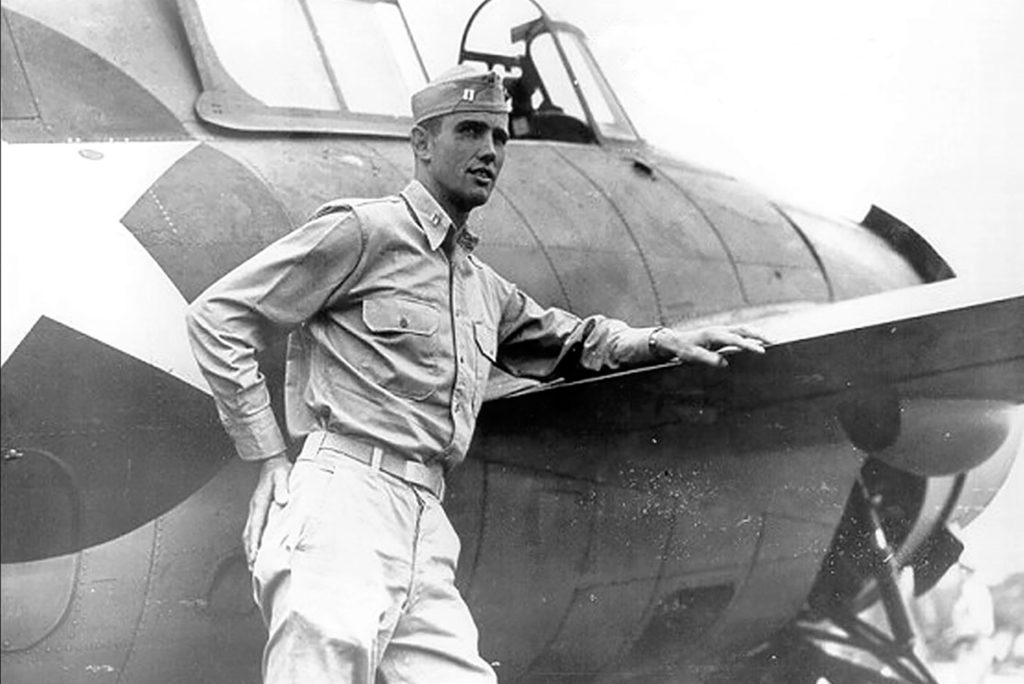
“I looked around and can’t find a friendly airplane any place,” Carl continued, “…and the next thing I know, I’ve got a Zero on my tail…that’s shooting away.” He headed for a cloud, “chopped the power, and threw the plane into a skid. When I came out of the other side, the Zero had overrun me. I pulled the trigger on my guns—and got nothing!” His guns had jammed, but evidently Carl’s maneuver “scared [the Japanese pilot] so badly that he gave up the fight.”
Despite being shot up, Carl was able to limp back to safety. He went on to become the Marine Corps’ seventh-ranking fighter ace, with 18½ victories.
Elsewhere, Red Parks led his division’s obsolete Buffalos against the incoming raiders, and was immediately jumped by the Zero escort. Hughes, who watched the battle from the ground, said the Buffalos “looked like they were tied to a string while the Zeros made passes at them.” Parks, one of the first victims, bailed out of his burning aircraft. His parachute opened, but as he dangled from the shroud lines, a Zero pilot strafed him all the way down, and continued to fire even as his body landed on a reef.
Parks may have had a premonition the night before his death. Normally an extrovert, he was moody and distracted. Captain Kirk Armistead tried to cheer him up. “By this time tomorrow, it’ll all be over,” he said. “Yeah,” Parks replied, “for those of you who get through it.” All the pilots in Park’s division were shot down.
Recommended for you
Captain Philip R. White was one of only two men in the second division to survive. “After the first pass, I lost my wingman and the rest of the division,” he reported. “I made a long, low, fast climb and made a second above-side pass, and started for a third, when I saw a Zero fighter climbing up on my tail very rapidly. I pushed my stick forward as hard as I could and went into a violent dive. When I recovered and looked around, I had lost the Zero fighter.”
White spotted a Val and made “a long fast side pass on [it].” The dive bomber wavered and then “made an easy left turn into the water.” White regained altitude and targeted another Val, making two passes on it before running out of ammunition. He returned to Midway and rearmed, but did not get back in the fight. In his after-action report, he complained bitterly: “The F2A-3 is not a combat aircraft. It is inferior to the planes we were fighting in every respect….It is my belief that any commander that orders pilots out for combat in a F2A-3 should consider the pilot as lost before leaving the ground.”
Captain Armistead’s third division attacked in column, starting their firing run at 17,000 feet. His target consisted of “five divisions of five to nine planes each, flying in division ‘Vees.’” He made a high-speed head-on approach on the fourth enemy division. “I saw my incendiary bullets travel from a point in front of the leader, up through his plane and back through the planes on the left wing of the Vee,” Armistead reported. He looked back as he continued his dive, and saw two of those three Japanese planes falling in flames.
Armistead pulled out of his dive and zoomed back to 14,000 feet for another run. Suddenly three Zeros made a firing pass on his Buffalo. “I kicked over in a violent split ‘S’ and received 3 20mm shells: one in the right wing gun, one in the right wing root tank, and one in the top left side of the engine cowling…[plus] 20 7.7mm rounds in the left aileron…which sawed off a portion of the aileron.” He pushed over in a power dive, barely in control as his Buffalo corkscrewed toward the ocean. The Japanese fighter pulled off, assuming the American was done for. Armistead regained control, however, pulling out at 500 feet before shakily landing on Eastern Island.
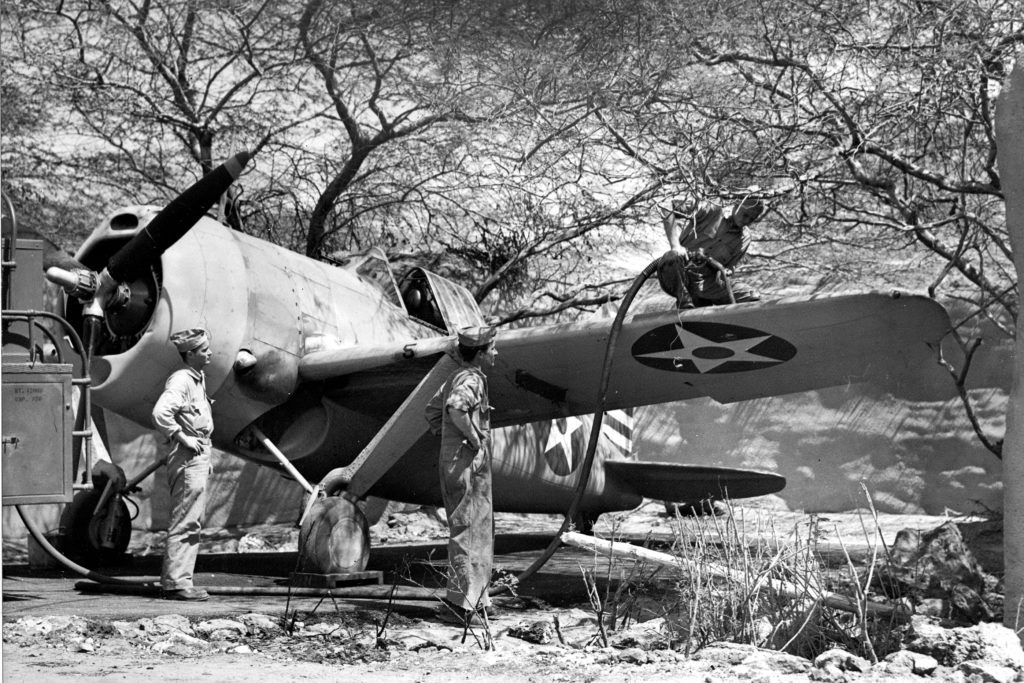
Captain William C. Humberd rolled in behind Armistead and shot down one bomber in a high-side approach. He attacked again from the other side. “I was halfway through another run when I heard a loud noise and turning around, saw a large hole in the hood of my plane…and two Jap Zeros on me about 200 yards astern.” He pushed over in a steep dive to escape, but one of the enemy planes kept on his tail. “I stayed at water level with full throttle until I gained enough distance to turn into him. We met head on. I gave him a long burst when we were about 300 yards distant, and the plane caught fire and, out of control, dived into the water.”
Humberd landed his battle-damaged aircraft shortly afterward. “My hydraulic fluid was gone, and my flaps and landing gear would not lower, so I used my emergency system to lower my wheels.” He landed safely, although his Buffalo had three or four holes in the left fuel tank and two 20mm holes in the fuselage. Despite the damage, Humberd refueled, rearmed and took off intending to go “some distance from the field for a period [of time] when orders to land were given to all fighting planes.”
Second Lieutenants William V. Brooks and William B. Sandoval made a pass down the right side of the enemy formation. “One of us got a plane from the right side of the Vee,” Brooks said. When he pulled out of the dive, two fighters attacked him. “I could not out-dive these planes [his landing gear had partially locked in the down position], but I managed to dodge them and fire a burst or so into them as they swept past.” At this point Brooks was close enough to Midway for anti-aircraft fire to drive the Japanese off.
Brooks stayed in the fight. “I saw two planes dog-fighting…and decided to go help,” he said. “My plane was working very poorly, and my climb was slow. As I neared the fight, both planes turned on me!” Brooks believed he had been tricked—that the Japanese were staging a sham battle to attract him. “I turned and made a fast retreat, collecting a goodly number of bullets on the way.” With his aircraft shot up, he decided to land. “As I circled the island, I saw two Japs on a Brewster,” he continued. “Three of my guns were jammed, but I cut across the island, firing as I went with my one gun.” He was too late, and the Marine was shot down. Brooks landed his tattered aircraft with 72 bullet and cannon holes in it.
Sandoval was not so lucky. One of his squadron mates reported that he leveled off on his firing run and got “nailed” by a backseat gunner. He failed to return and was listed as killed in action. He was later credited with a victory after Brooks requested that “Lt. Sandoval, deceased, be logged up with the bomber which one of us got in our first run.”
Second Lieutenant Charles M. Kunz was the last pilot in Armistead’s division to survive. “I saw tracers go by my cockpit and bullets ripping my wings,” he recounted. He immediately dived for the water in an attempt to shake the Zero off his tail. “I made radical turns at full throttle hoping the pilot couldn’t get steadied on me.” He was partially successful. His aircraft was still flyable but bullets passed along each side of his head, creasing his scalp above each ear. Despite being close to passing out, he managed to land his aircraft safely. That night the group commander said “it was necessary for the group surgeon to give him several ‘stiff shots’ before he could sleep.” Credited with two Vals, Kunz would become the only American ace to have scored any victories in the Buffalo.
“I was just preparing for another run on the bombers, when I saw a Japanese fighter already on my tail,” recalled 2nd Lt. Darrell D. Irwin, flying in the two-plane fourth division. “I immediately dove (from 16,500 feet)…attaining at least 300 knots, pulling out about 3,500 feet.” He was unable to shake his pursuer, who shot away most of his left aileron. Irwin dropped to 500 feet off the water and headed for Eastern Island. Another Zero joined the chase and “continued to make runs on me, each time going by me and making steep wing-overs for another run…on several occasions I heard bullets strike the armor plate in back of my seat which is only shoulder high. I ducked my head as far as I could in the cockpit.” Irwin landed his heavily damaged Buffalo safely, “during a full scale dive bombing attack.”
Of VMF-221’s 25 aircraft that engaged the Japanese, 15 were shot down, and only two of the remainder were flyable after the brief but deadly encounter. The air group suffered 14 pilots killed in action and four wounded. VMF-221 had been all but wiped out as an effective fighting force. Twenty-three squadron pilots were awarded the Navy Cross, the majority posthumously.
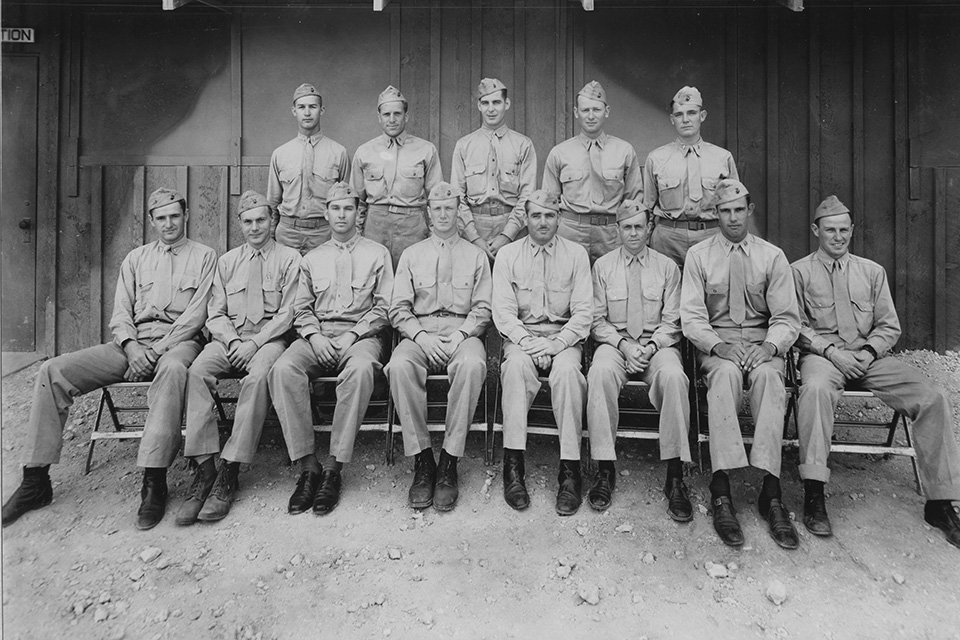
“Most of the surviving pilots were stunned by their experience,” Carl wrote. “…[T]he commanding officer and executive officer both were missing; nobody seemed to know if any of the others might have bailed out….VMF-221 was a shattered command.”
VMF-221 pilots claimed eight Vals and three Zeros shot down, plus four aircraft damaged. However, with the benefit of hindsight, author Barrett Tillman stated in Wildcat: The F4F in WWII, “At best, it appears that Parks’ squadron knocked down one Zero and two bombers.” On the Japanese side, Vice Adm. Chuichi Nagumo reported the loss of three B5Ns and two A6Ms in aerial combat and four planes to anti-aircraft fire.
Lieutenant Colonel Ira E. Kimes, Marine Air Group 22’s commanding officer, stated in a report to the commander in chief, Pacific Fleet, that “The performance of the F2A-3 and F4F-3 types of airplanes is markedly inferior to that of the Japanese 00 2 Sento K1 Fighter in speed, maneuverability, and rate of climb….[I]t is recommended that the F2A-3 and F4F-3 be not assigned as equipment for use in combat, but be retained for use at training centers only.” Midway was indeed the Buffalo’s swan song in American service, but the Wildcat’s glory days were far from over.
Colonel Richard Camp (U.S. Marine Corps, ret.) is the author of 13 books and more than 100 articles on military history. Further reading: Miracle at Midway, by Gordon W. Prange; History of Marine Corps Aviation in World War II, by Robert Sherrod; and Marines at Midway, by Lt. Col. Robert D. Heinl Jr.
This feature, originally titled “A Shattered Command,” appeared in the July 2017 issue of Aviation History. It received the General Roy S. Geiger Award from the Marine Corps Heritage Foundation for best article published in 2017 about Marine Corps aviation. Subscribe here!

